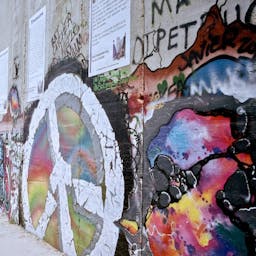Web 2.0: Promoting Open, Participatory and Representative Democracy.
Jan 21, 2015
Story
“The antiglobalization movement was the first step on the road. Back then our model was to attack the system like a pack of wolves. There was an alpha male, a wolf who led the pack, and those who followed behind. Now the model has evolved. Today we are one big swarm of people."
— Raimundo Viejo, Pompeu Fabra University Barcelona, Spain
This week U.S. citizens, inspired by Egyptian citizens in Tahrir Square, are using Facebook, Twitter, YouTube and Tumblr to organize ‘OccupyWallStreet.’ An ‘OccupyWallStreet’ Facebook poll asks participants to vote for their ‘one demand.’ ‘Revoke Corporate Personhood’ is currently leading with 2108 votes. ‘OccupyWallStreet’ participants communicate and collaborate in solidarity with concerned citizens in locations around the world including Madrid, Spain; London, UK; Milan, Italy; and Tokyo, Japan. On September 17, ‘Constitution Day’ participants have pledged to peacefully assemble on Wall Street and in financial markets around the world in a ‘non violent action swarm’ to articulate their demands.
I am excited to see Web 2.0 used as a tool to promote open, participatory and representative democracy.
In March 2005, I traveled with the Global Exchange delegation ‘Women Making Change’ to Afghanistan for an Independent Study Project in photography. I returned to Afghanistan in March 2007, as a volunteer for the NGO Afghans4Tomorrow, teaching English and photographing in the A4T girl's schools.
I heard firsthand the issues important to Afghan women and girls; education and literacy, economic independence and a desire for peace and security.
S.229 ‘The Afghan Women Empowerment Act of 2009’ introduced by Senator Barbara Boxer expressed ‘the sense of Congress that the protection of the rights of women and girls in Afghanistan and their full participation in the reestablishment of democracy are essential to Afghanistan's reconstruction, and to achieve such reconstruction the U.S. government must commit resources to advance the rights of women throughout Afghanistan.‘
This bill did not become law. Web 2.0 can be a powerful tool to keep pressure on the international community to protect women’s rights and human rights as U.S. and coalition forces withdraw from Afghanistan.
The 400 wealthiest Americans control half of our countries wealth. Our Congress is beholden to lobbyists and special interests. The military and security industrial complex, the wars in Iraq and Afghanistan, tax cuts for the wealthy and TARP bank bailouts have amassed a 14 trillion dollar deficit.
Our Founding Fathers charged us with holding our government accountable.
Patrick Henry asserted that;
“The Constitution is not an instrument for the government to restrain the people, it is an instrument for the people to restrain the government."
As a citizen of a democracy I feel a moral and civic responsibility to act.
Web 2.0 is an effective tool to educate and agitate, initiate dialogue and advocate for change.




